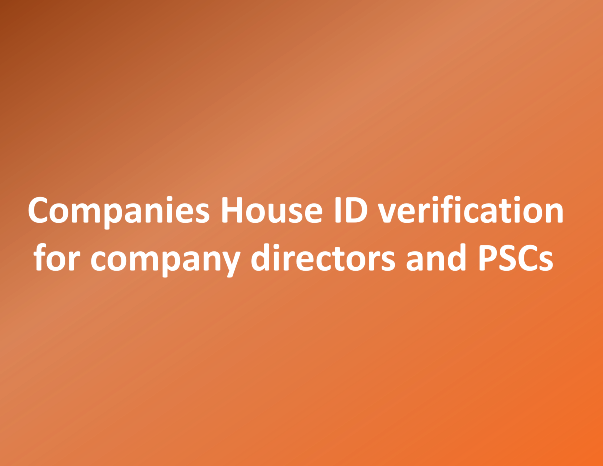
Ensuring that we have a shared understanding of accounting and auditing terms with our clients is crucial for effective and efficient communication.
To help with this shared understanding, we’ve developed an alphabetical list of the most commonly used accounting words and phrases. This glossary includes those terms that business owners will encounter when interpreting their accounts or reviewing their financial information with their accountant. Our aim is to give simple and accessible definitions with a bit of background where we thought this might be of interest.
We hope that this is useful and if you have any queries please get in touch, we’d be delighted to hear from you.
A – B
ACCA
The Association of Chartered Certified Accountants. One of several organisations that regulate accountants in public practice and industry. Membership is achieved by examination and experience gained by working in an organisation approved as a training office. See also ICAEW.
Accruals basis
One of the fundamental principles of accountancy. A transaction must be accounted for in the accounting period to which it relates, even if it is actually paid for in a different period. This gives rise to creditors – where an item is bought but not paid for until a later period – and debtors – where an item is sold but payment is not received until later. See also cash basis.
Alphabet shares
If permitted by its Articles of Association a company may issue shares of various classes, which may have distinct voting rights or dividend entitlement. Classes of share are usually differentiated by referring to them by letters of the alphabet, ‘A’ shares, ‘B’ shares and so on. See also Articles of Association
Amortisation
Describes the writing off over a period of time of the value of an intangible asset. See Depreciation.
Articles of association
A company’s constitution and effectively an agreement between the company and its shareholders or members. It sets out such matters as the conduct and obligations of the directors, conduct of meetings, rights of shareholders, resolution of disputes, and the circumstances of an eventual dissolution or winding up. In most cases all of these matters are also prescribed by the Companies Act.
Assertion
An auditing term. An auditor is tasked with preparing a report stating whether the accounts present a true and fair view. One of the starting points is the accounts produced by the management which unavoidably contain implicit or explicit claims and representations regarding the appropriateness of various elements. The auditor needs to assess the risk that relying on any of these assertions may lead to a material misstatement and design his or her audit procedures accordingly. See Risk.
Asset
Something of commercial value owned by a business. It could be a current asset, i.e. one that will be realised in the short term, such as a debtor or an item of trading stock, or it could be a fixed asset; one that lasts for a number of years such as a machine or a building. See also Depreciation; fixed asset.
Audit
The objective of external audit is for the auditor to express an opinion on the truth and fairness of financial statements. Small companies are mostly owner-managed and exempt from the requirement for an audit. However, in larger companies the owners, shareholders and other stakeholders are separate from management and need the assurance provided by an audit that the financial statements present a true and fair view. They therefore rely on external verification by auditors for reasonable assurance that the accounts are free from material misstatements.
The term ‘audit’ is often used loosely to indicate that the accounts have been prepared by a professional accountant. However, the audit is a separate function from accounts preparation. It is a highly regulated activity and can be carried out only by those who have been authorised by certain professional organisations.
Balance Sheet (or Statement of Financial Position)
Part of an organisation’s financial statements, the balance sheet lists the assets, liabilities and capital of an organisation as they stand at the end of an accounting period, and gives a good indication of the organisation’s solvency.
Benefit-in-kind
A benefit paid to an employee (usually a senior employee or director) in a form other than cash, typically a car or membership of a private health scheme. Such benefits are taxable.
C - D
Capital
In the context of a business this means the amount of funds that the owners or shareholders have invested, including accumulated profits. It is equal to the net asset value of the business.
The term is also used to distinguish investment activity from revenue. For example, a company may invest funds in research and development but decide to record this as the acquisition of a long-term asset instead of an expense, in other words capital rather than revenue.
Cash basis
The opposite of the accruals basis. Transactions are only stated on the profit and loss account at the point where they are paid for, irrespective of the period to which the transaction relates. This is a simple method but leads to mismatches and serious inaccuracies. Nevertheless, HMRC now allow small businesses to prepare their accounts on this basis.
Cash flow statement
If a company is of a certain size a cash flow statement will form part of their annual financial statements. This reconciles amounts of liquid assets (cash and bank accounts) at the beginning of the accounting period with the amounts at the end of the period showing how cash has been generated and disbursed.
Company share buy-in
The purchase by a company of some of its own share capital, funded out of distributable reserves. For family or owner-managed businesses it can be a very effective way of buying out a retiring shareholder/director. See Shareholders’ funds.
Contingent liability
A liability that depends for its existence or value on the future occurrence of some event, such as the outcome of a law case or dispute.
Corporate governance
The framework of rules, practices, and processes by which a company is directed and controlled. Company law and good practice require that directors take into account the interests of all of a company’s stakeholders. See FRC.
Cut-off
A process that aims to ensure that matching transactions are accounted for in the same accounting period. For example, if a company takes delivery of an item of trading stock on the last day of the year a cut-off procedure would ensure that both the stock item and the associated purchase invoice (creditor) are included in the balance sheet. See accruals basis.
Deferred tax
One of the more arcane and difficult-to-explain accounting principles. Tax rules calculate profit for taxation purposes on a different basis from the way they are calculated under generally accepted accounting practice (see UK GAAP). This gives rise to timing differences. A typical example is when full tax relief is given on a transaction in the year in which it occurs but under accounting rules the cost of the transaction is spread over several years. This means that in year one the tax charge is lower than one would expect in relation to the reported profit. In subsequent years the charge is higher until the cost of the transaction has been completely written off. Therefore, a provision is made in year one for the tax deferred and that provision is reduced annually until the timing difference is extinguished.
Depreciation
The spreading of the cost of a fixed asset (eg. machinery, equipment, motor vehicles) over its useful life by treating a proportion of its initial cost as an expense in the profit and loss account in each successive accounting period and reducing its value by the same amount. See fixed asset.
Disclosure
The statement in annual accounts of various facts and assertions relating to a company’s business and financial affairs. Many types of disclosure are prescribed by the Companies Act and by International Financial Reporting Standards. Smaller entities are granted various exemptions from full disclosure. See FRS.
Distribution
Normally this describes a payment to shareholders out of the taxed profits of a company, usually a dividend. For tax purposes some types of payment which are not dividends are treated as distributions.
Double entry
A system which can be traced back to 14th century Genoa, but which was first described in 1494 by Luca Pacioli, a Franciscan friar and associate of Leonardo Da Vinci, it is the most fundamental of all accounting principles. The rule that for every debit entry there must be a corresponding credit (and vice versa) provides a simple but extremely effective error detection mechanism. If the total of all the debits doesn’t equal the total of all the credits, there must be an error. See Balance sheet; Journals.
E - I
Ethics
A code of conduct to which all members of the main accountancy bodies are required to adhere, and which is reinforced by disciplinary procedures and sanctions. According to the ICAEW ‘Chartered Accountants are expected to demonstrate the highest standards of professional conduct and to take into consideration the public interest. Ethical behaviour by Chartered Accountants plays a vital role in ensuring public trust in financial reporting and business practices and upholding the reputation of the accountancy profession.’
Financial instrument
These fall into two categories, ‘basic’ and ‘other’.
Basic financial instruments are items such as trade debtors, creditors, cash, and bank loans.
Other financial instruments include foreign exchange contracts and complex loans.
The latter are required to be stated on the balance sheet at a ‘fair value’ at each accounting date with any movements in value taken to the profit and loss account. The measurement of fair value can be a difficult and onerous exercise.
Fixed Asset
An asset that has a long useful life, usually more than a year. Such assets can be tangible such as a machine or vehicle) or intangible (such as goodwill or know-how) and their initial cost is usually written off through the profit and loss account by annual instalments over their economic life. See depreciation; amortisation; asset.
FRC
Financial Reporting Council. The statutory body responsible, among other duties, for monitoring and maintaining audit standards and standards of corporate governance. See Corporate Governance.
FRS
Financial Reporting Standards. The fundamental structure for all statutory accounts in the UK and compliant with International Financial Reporting Standards (IFRS). These effectively comprise the professional accountant’s handbook and give detailed guidance on every aspect of financial reporting. In their entirety they form what is generally referred to as UK GAAP.
Going concern
Describes a business that is viable, i.e. not expected to fail in the foreseeable future. Annual accounts are normally prepared on the basis that a company is a going concern. This is important because if the company is not a going concern the values attributable to most of its assets will be much reduced.
Goodwill
An intangible asset usually reflecting the value of a company’s customer base and current and future contracts. In corporate finance it represents the excess of the purchase price of a business over the value of its net assets. As with all fixed assets purchased goodwill has to be written off by annual instalments over its expected useful life.
Gross assets
The total assets of a company before the deduction of any liabilities. This is a significant factor in determining whether a company is entitled to any exemptions from the requirement to produce full statutory accounts or have its accounts audited. See Micro-entity; Small entity.
ICAEW
The Institute of Chartered Accountants in England and Wales is probably the oldest of the accountancy bodies, dating back to 1880. It is a professional membership organisation with over 189,550 chartered accountants and students as members. In its own words, ‘we train, develop, and support each one of them so that they have the knowledge and values to help build local and global economies that are sustainable, accountable and fair.’ See QAD.
Intangible asset
A fixed asset with no physical attributes but which nevertheless has a value and a limited useful life. Typical examples are goodwill, know-how, leases, patents, and licences. See Fixed asset.
Internal controls
Used mostly in auditing, this term refers to the systems deployed by a company to minimise the risk of misstatement in its accounts and to protect against fraud. When planning his work an auditor must assess the effectiveness of the internal controls and judge to what extent he may rely on them.
ISA
International Standards on Auditing. These have been drawn up by the International Auditing and Assurance Standards Board, and govern every aspect of statutory audit, forming the benchmark against which the quality of an auditor’s work is judged. In the UK these standards are issued and monitored by the Financial Reporting Council (See FRC).
J - R
Journals
The recording of the debit and credit entries by which a set of accounts is prepared, adjusted, and amended. An essential trail that can be followed and understood by any professional who might subsequently need to analyse or revise the accounts.
Liability
The obligation of a person or entity to make a future payment to another. In its simplest form this could be an unpaid purchase invoice, or an outstanding loan.
Limited liability
The principle by which the liability of any member of a company is limited to the amount he or she for their shares. Limited liability companies emerged in the sixteenth century, giving rise to the concept that a company is a separate person at law from its individual members. This enabled entrepreneurs to take risks without jeopardising their personal assets and the wellbeing of their families, thus facilitating the huge expansion of trade that characterises the modern world.
Materiality
An auditing term, this usually relates to the relative importance of an error or misstatement in the context of the true and fair view required to be shown by the financial statements. In planning his or her work the auditor will set a level of materiality dependent on the entity’s financial circumstances, usually a percentage of turnover and/or net assets. Errors falling below this level might be ignored, unless they appear to be symptomatic of an underlying larger problem.
Micro-entity
Is a very small limited company or LLP which satisfies two or more of the following criteria:
- Turnover less than £632,000
- Gross assets not exceeding £316,000
- 10 or fewer employees
MTD
Making tax digital. A far-reaching initiative designed to oblige small businesses to report their accounts quarterly to HMRC via approved software.
Profit and Loss Account
That part of an enterprise’s periodic financial statements which shows income (revenues) from which are deducted costs and expenses leading to the ‘bottom line’ which states the profit or loss for the period.
QAD
The Quality Assurance Department is the section of the ICAEW that carries out Practice Assurance Compliance reviews on member firms to check if they are complying with Practice Assurance Standards. Most firms will have a visit lasting two days once every six years, but the frequency is increased for firms involved in the audit of public interest entities. In the intervening years audit firms are required to carry out internal reviews (or subcontract them to approved third parties) annually. See ICAEW
Related party
The statutory accounts of a limited company (referred to below as ‘reporting entity’) are required to disclose transactions with related parties. A related party is:
- A person or other entity that has control or significant influence, directly or indirectly through one or more intermediaries, over the reporting entity; or
- Another entity over which the reporting entity has control or significant influence, directly or indirectly through one or more intermediaries; or
- Another entity that is under common control with the reporting entity through having either common controlling ownership or owners who are close family members or common key management
The identification of related parties can, in some circumstances, be highly complicated, and where companies seek to conceal the existence of such parties, sensitive and challenging.
Risk
Quite apart from the fact that business itself is a risky activity, the concept of risk is extremely important to the auditor, who has to determine whether there is a risk of fraud or any other occurrence that might lead to material misstatements in the accounts of the company. Risks may arise from:
- Significant economic, accounting, or other developments.
- The complexity of transactions.
- Transactions with related parties.
- Lack of objectivity in the measurement of financial information.
- Transactions outside the normal course of business.
See Materiality
S - Z
Shareholders’ Funds
In a company having share capital, this is all of the capital currently invested in the company (except loan capital) and should be the same as the value of the net assets. It will include distributable funds such as the balance on the profit and loss account (undistributed profits), and those that are not normally distributable such as revaluation reserves, share premium account, and the nominal value of the shares issued.
Small entity
A company which satisfies two or more of the following criteria:
- Turnover less than £10.2m
- Gross assets not exceeding £5.1m
- 50 or fewer employees
SME
Small or medium-sized enterprise. According to a Houses of Parliament report, in the year 2020 there were 6 million SMEs in the UK, representing 99% of the total number of businesses.
UK GAAP
UK Generally Accepted Accounting Practice (see FRS).
The information provided in this blog is for general informational purposes only and should not be considered professional advice. As far as we are aware, the content is accurate at time of publication. Torgersens assumes no responsibility for errors or omissions in the content or for any actions taken based on the information provided.







